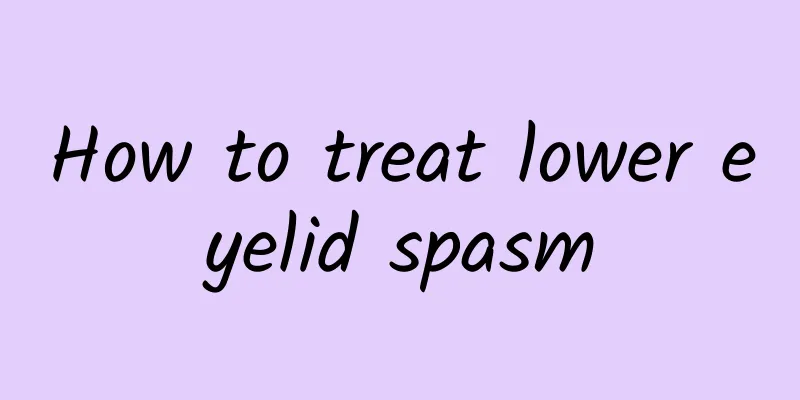How to treat lower eyelid spasm

|
Lower eyelid spasm is also a relatively common symptom. Eyelid spasm is a spasm and twitching of the facial nerve of unknown cause. It is a neurological disease. If it is serious, it will have a great impact on the patient's life and mental aspect. It often causes the patient to close his eyes continuously and strongly. Spasm should be treated in time, and there are many treatment methods. How to treat lower eyelid spasm 1. Currently, botulinum toxin is the first choice for the treatment of blepharospasm. Procedure 1. Preparation, understanding of botulinum toxin, and being familiar with the local anatomical structure of muscles, nerves, and blood vessels at the injection site; 2. Locate the target muscle and injection site by hand or with the help of relevant instruments, such as electrical stimulation, electromyography, ultrasound, etc.; 3. Determine the injection dose based on the patient's condition, degree of spasticity, target muscle condition, and guidelines and instructions; 4. Perform the injection. The orbicularis oculi muscle is the most important muscle affected in patients with blepharospasm and needs to be treated intensively; 5. Observe after the injection and deal with complications. 2. Injection of the orbicularis oculi muscle 1. The orbicularis oculi muscle is a thin flat muscle with a thin epidermis. Botulinum toxin can be injected subcutaneously. Repeated injections can be chosen based on the recurrence of the patient's symptoms. 2. Commonly used scheme: For the upper eyelid, two eyelid injection sites are selected, the inner and outer edges. When the symptoms are severe, an additional upper eyelid orbital injection site can be added; for the lower eyelid, the outer and middle lower parts are usually selected; an additional point can be added to the outer orbital site at the level of the palpebral fissure (as shown in the blue dot on the right eye in Figure 1) 3. Simplified solution: Omit the lateral orbital point at the level of the palpebral fissure, and move the lateral point of the lower eyelid slightly upward (as shown in the left eye triangle in Figure 1) Precautions When injecting, avoid the middle of the upper eyelid to prevent ptosis due to paralysis of the levator palpebrae superioris muscle. Avoid injecting deep into the inner side of the lower eyelid as the toxin may diffuse into the inferior oblique space and cause diplopia. The needle insertion direction at each point is away from the pupil. For patients with severe eye closure due to blepharospasm, ciliary bundle injection can be added. 1U can be injected subcutaneously in the middle of the upper eyelid parallel to and close to the eyelid margin. If the injection site is too high, it may diffuse to lift the upper eyelid and cause ptosis. |
<<: How to treat skin scratches
>>: Can aloe vera gel treat skin allergies?
Recommend
How to eliminate chicken curry
Many people don’t know what neck curry chicken is...
Best rehabilitation plan for Achilles tendon rupture
When the Achilles tendon ruptures, surgical treat...
How to treat hernia? These three methods are the most effective
In clinical practice, once people are diagnosed w...
What are the benefits of drinking safflower in water that you don't know about?
Safflower is a Chinese herbal medicine that we ar...
Can Polygonatum be used to make wine?
Polygonatum sibiricum is a relatively common Chin...
What are the main components of sulfur?
Sulfur is commonly seen in chemistry. It is usual...
How to treat children's tooth decay?
Many children suffer from tooth decay due to the ...
What to do if you have a high fever
Fever is a very common problem. Fever is very har...
How to improve enlarged pores on legs
Many people will find that their body pores are v...
Symptoms of heart failure
The heart provides power for human activities and...
Anemia diet for 11-month-old babies
If an 11-month-old baby suffers from anemia, it w...
What are the indicators of leukemia blood routine? It turns out to be like this
Leukemia is a common disease these days, and it i...
Is it okay to wash your hair during menstruation?
Menstruation is a physiological phenomenon that e...
What is demyelination of white matter?
Protein demyelination refers to the destruction o...
Can pregnant women eat Panax notoginseng?
Pregnant women need to pay special attention to t...









